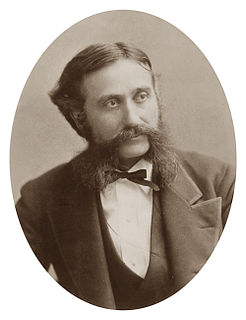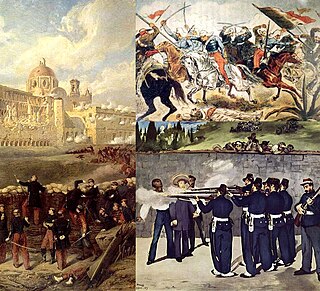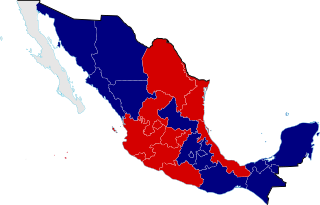
A chacmool is a form of pre-Columbian Mesoamerican sculpture depicting a reclining figure with its head facing 90 degrees from the front, supporting itself on its elbows and supporting a bowl or a disk upon its stomach. These figures possibly symbolised slain warriors carrying offerings to the gods; the bowl upon the chest was used to hold sacrificial offerings, including pulque, tamales, tortillas, tobacco, turkeys, feathers and incense. In an Aztec example, the receptacle is a cuauhxicalli. Chacmools were often associated with sacrificial stones or thrones.

Coatlicue, wife of Mixcōhuātl, also known as Tēteoh īnnān, is the Aztec goddess who gave birth to the moon, stars, and Huītzilōpōchtli, the god of the sun and war. The goddesses Toci “our grandmother” and Cihuacōātl “snake woman”, the patron of women who die in childbirth, were also seen as aspects of Cōātlīcue.

In Aztec mythology, Xiuhtecuhtli[ʃiʍˈtekʷt͡ɬi], was the god of fire, day and heat. In historical sources he is called by many names, which reflect his varied aspects and dwellings in the three parts of the cosmos. He was the lord of volcanoes, the personification of life after death, warmth in cold (fire), light in darkness and food during famine. He was also named Cuezaltzin[kʷeˈsaɬt͡sin] ("flame") and Ixcozauhqui[iʃkoˈsaʍki], and is sometimes considered to be the same as Huehueteotl, although Xiuhtecuhtli is usually shown as a young deity. His wife was Chalchiuhtlicue. Xiuhtecuhtli is sometimes considered to be a manifestation of Ometecuhtli, the Lord of Duality, and according to the Florentine Codex Xiuhtecuhtli was considered to be the father of the Gods, who dwelled in the turquoise enclosure in the center of earth. Xiuhtecuhtli-Huehueteotl was one of the oldest and most revered of the indigenous pantheon. The cult of the God of Fire, of the Year, and of Turquoise perhaps began as far back as the middle Preclassic period. Turquoise was the symbolic equivalent of fire for Aztec priests. A small fire was permanently kept alive at the sacred center of every Aztec home in honor of Xiuhtecuhtli.

Tlaltecuhtli is a pre-Columbian Mesoamerican deity worshipped primarily by the Mexica (Aztec) people. Sometimes referred to as the "earth monster," Tlaltecuhtli's dismembered body was the basis for the world in the Aztec creation story of the fifth and final cosmos. In carvings, Tlaltecuhtli is often depicted as an anthropomorphic being with splayed arms and legs. Considered the source of all living things, she had to be kept sated by human sacrifices which would ensure the continued order of the world.

Hubert Howe Bancroft was an American historian and ethnologist who wrote, published and collected works concerning the western United States, Texas, California, Alaska, Mexico, Central America and British Columbia.

The Mexican Empire or Second Mexican Empire was the name of Mexico under a constitutional, hereditary monarchy declared by a Mexican Assembly of Notables in accordance with the interests of the French Empire, during the Second French intervention in Mexico. Napoleon III of France wanted to establish a monarchist ally in the Americas as a restraint upon the growing power of the United States. Chosen as the Mexican emperor was Austrian Archduke Ferdinand Maximilian, of the House of Habsburg-Lorraine. His wife and empress of Mexico was the Belgian princess Charlotte of the House of Saxe-Coburg and Gotha.
La Reforma, refers to a period in Mexican history in which landmark reforms, including a new constitution, were passed by the Liberal Party of Mexico in the 1850s. They were modernizing measures: social, political, and economic, intended to undermine the power of the Catholic Church in Mexico, separate church and state, reduce the power of the Mexican military, and to develop the economy.

The Second French Intervention in Mexico, 1861–1867; was an invasion of Mexico, launched in late 1861, by the Second French Empire (1852–1870), aiming to establish in Mexico a regime favorable to French interests.

The War of Reform in Mexico, was a three-year civil war lasting from December 1857 to December 1860 fought between the Liberal Party and the Conservative Party over the Constitution of 1857, promulgated under the liberal presidency of Ignacio Comonfort. The new constitution was part of a wider liberal program intended to eliminate the political, economic, and cultural power of the Catholic church; separating church and state, while also attempting at reducing the power of the Mexican Army, and economically developing the nation.

The history of Oregon, a U.S. state, may be considered in five eras: geologic history, inhabitation by native peoples, early exploration by Europeans, settlement by pioneers, and modern development.

The Californias, occasionally known as The Three Californias or Two Californias, are a region of North America spanning the United States and Mexico, consisting of the U.S. state of California and the Mexican states of Baja California and Baja California Sur. Historically, the term Californias was used to define the vast northwestern region of Spanish America, as the Province of the Californias, and later as a collective term for Alta California and the Baja California Peninsula.
José Joaquín de Arrillaga was a Basque officer that served twice as Governor of the Californias and as the first Governor of Alta California, following the partition of the Californias in 1804. He is the only Spanish-era governor to be buried in California.

San Juan Cacahuatepec is a city in the Mexican state of Oaxaca, near the border with Guerrero. It is located in the Jamiltepec District in the west of the Costa Region. Its population in 1990, according to The Columbia Gazetteer of North America, was 3,116; in 2006, it was about 5,000. Along with San Pedro Amusgos, it is a heavy center of population for the indigenous Amuzgo. The name Cacahuatepec is Nahuatl, translating "Place of Cacao-bean mountain".
The Thomas and Ruckle Road, also known as Ruckles Road or Ruckels Road, was a wagon road over the Blue Mountains.
John Sellwood was a pioneer Episcopal minister who settled in the U.S. state of Oregon on a 321-acre (130 ha) donation land claim on the east bank of the Willamette River upstream from Portland.
Mariano Martínez de Lejanza was acting Governor of the territory of Santa Fe de Nuevo México from 1844 to 1845.

First Lady of Guatemala is the title held by the wife of the president of Guatemala. The current Guatemalan first lady is Ana Marcela Giammattei, daughter of President Alejandro Giammattei, who had held the position since 2020.

Don José Noriega was a Spanish-born Californio ranchero and politician. He served as Alcalde of San José (mayor) and was a prominent landowner in the Bay Area.

Province of Las Californias was a Spanish Empire province in the northwestern region of New Spain. Its territory consisted of the entire U.S. state of California, a vast portion of Nevada, Utah, Arizona, Wyoming, Colorado and New Mexico, and the Mexican states of Baja California and Baja California Sur.














